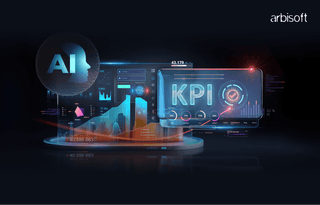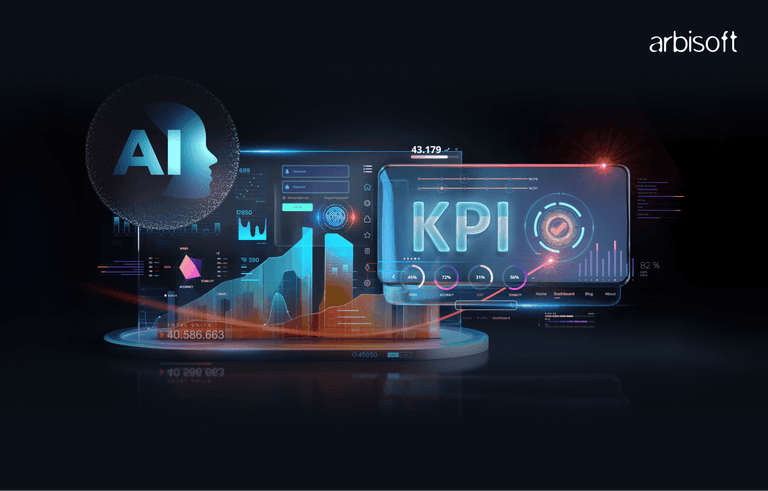We put excellence, value and quality above all - and it shows




A Technology Partnership That Goes Beyond Code

“Arbisoft has been my most trusted technology partner for now over 15 years. Arbisoft has very unique methods of recruiting and training, and the results demonstrate that. They have great teams, great positive attitudes and great communication.”
Hurricane Milton - Tracking the CAT 5 Hurricane Using the Latest Tech

Hurricane Milton is a tropical storm projected to impact the Florida coast as a Category 4 hurricane, according to the latest updates from the National Hurricane Center (NHC). The storm originated in the Atlantic and has intensified due to unusually warm sea surface temperatures, a crucial factor in the rapid development of tropical cyclones.
Milton is expected to make landfall between Clearwater and Sarasota, bringing dangerous winds, heavy rainfall, and storm surges. Residents in the projected path have been advised to evacuate as authorities prepare for widespread disruptions, including potential flooding, property damage, and power outages.
But how has this, and other Hurricanes been tracked? And how has this tracking become increasingly better through the years? We’ll be answering these and more questions in this article, but first, let’s start with the latest on Hurricane Milton.
Latest Update on Hurricane Milton
As of 06:00 AM EDT on Thursday, the Weather Channel reports that Hurricane Milton is moving away from Florida, bringing high winds, flooding rain, and storm surge. The hurricane made landfall Wednesday evening in Siesta Key, located south of Tampa Bay, and is now centered approximately 10 miles northeast of Cape Canaveral, off Florida's Atlantic coastline.
Heavy rain and strong wind gusts continue to impact various parts of the state, particularly in the eastern regions, as illustrated in the radar snapshot below. Recent measurements along the Atlantic coast include gusts of 92 mph in Marineland, 87 mph in Daytona Beach, and 76 mph at South Hutchinson Island.
Now, Hurricane Milton is expected to continue its track further into the Atlantic by Thursday morning and afternoon. While rainfall and wind gusts will gradually diminish throughout the day, the storm's departure from the state will lead to improving conditions as it heads out to sea.

The Role of AI in Tracking Hurricane Milton
As storms like Hurricane Milton become more common and stronger, artificial intelligence is playing a bigger role in helping meteorologists track these storms and reduce their impacts. For a long time, meteorologists have relied on complicated forecasting models based on things like wind speeds, temperature, and humidity. They get this information from planes, buoys, and satellites, but these models can take hours to update.
Machine learning models, on the other hand, use a lot of knowledge about the Earth’s atmosphere and data from how past storms have behaved. They are really good at recognizing patterns. By leveraging deep learning solutions and AI for data analysis, meteorologists can accelerate storm forecasts and glean deeper insights into evolving weather patterns. According to meteorologist Matt Lanza, “The meteorology community is, in some cases reluctantly, and in some cases fully embracing, AI modeling, In terms of hurricanes, we've learned that the AI modeling can go toe-to-toe with the physics-based model, so you have to use it.” This year, AI has given accurate storm-related predictions quickly and even days before a storm hits land.
For Hurricane Milton, many different models agreed that it would likely land between Clearwater and Sarasota, Florida, a prediction further supported by advanced predictive analytics solutions that enhance model accuracy. Lanza says that AI modeling “probably picked up on that potential outcome a good 12 to 18 hours before a lot of the other modeling.”

AI’s Accuracy in Tracking Storms
This isn’t the first time AI models have predicted a hurricane’s path before traditional models. For example, GraphCast, created by Google’s DeepMind, accurately predicted that Beryl, the first major Atlantic hurricane of 2024, would make landfall in Texas instead of Mexico. This shows a big improvement in forecasting abilities.
“It is extremely difficult for numerical models to get the timing and magnitude of rapid intensification correct, but it's way better than it was a decade ago," said Gus Alaka, director of the hurricane research division at the US National Oceanic and Atmospheric Administration (NOAA).
Another European AI model called AIFS successfully predicted the path of Francine as it hit the Gulf Coast. Lanza commented on how consistent this model was, saying, “Even the best performing traditional models I don’t believe were this consistent.” The accuracy of these models, bolstered by comprehensive ai and data science services, helps teams on the ground to plan and allocate resources more effectively.
The National Hurricane Center (NHC) has also added AI to its forecasting process. NHC Deputy Director Jamie Rhome called it a “pillar” of success last year. He highlighted, “The sophistication of AI has dramatically improved and it continues to improve, and that's critical because we only have three hours to make the forecast.”

Challenges and Future Directions
Even with its success, AI still faces some challenges. A 2024 study found that while machine learning models did a good job forecasting large-scale features of European windstorm Ciarán, they struggled with predicting damaging surface winds and other unusual aspects of the storm. Lanza warns against relying only on AI forecasting: “We're not turning the reins over to these things and just saying, ‘make me a forecast and I'll just regurgitate it.’ You have to still look at the broader spectrum of tools available to you.”
At the University of Florida, AI scientist Zhe Jiang is working on another challenge: predicting storm surges along Florida’s coasts. Jiang says, “AI for coastal modeling has lagged behind more global weather forecasting,” and he is trying to develop AI models that create forecasts for ocean currents much faster than before. He hopes to cut the forecasting time from hours to seconds, which could save lives and prevent property damage during storms.
Jiang stresses how important this work is, saying, “There are more and more severe events and coastal hazards like Hurricane Milton going on near my home, and we are really racing with time to develop AI technologies faster.”
Tips to Stay Safe During Hurricane Milton
1. If you are in an evacuation zone, follow local authorities' instructions to avoid dangerous conditions.
2. Ensure you have enough water, non-perishable food, flashlights, batteries, medications, and important documents to last several days.
3. Regularly check updates from verified sources like the National Hurricane Center, and listen to local news and emergency alerts.
4. Board up windows, secure outdoor furniture, and move valuables to higher ground if flooding is expected.
5. Never drive or walk through floodwaters, as they can be deceptively deep and dangerous.
6. Have backup power sources ready, such as portable chargers and generators, and turn refrigerators and freezers to their coldest settings to preserve food if the power goes out.
By staying informed and following safety precautions, residents can effectively mitigate the risks posed by Hurricane Milton.
























